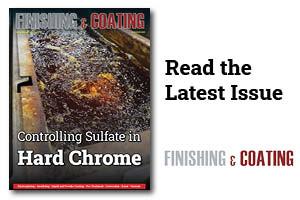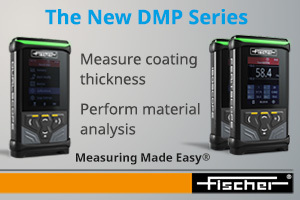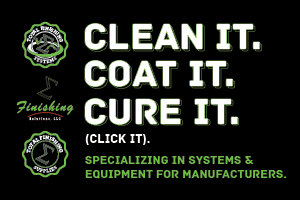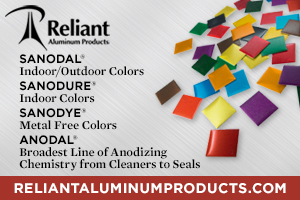The Strategic Environmental Research and Development Program (SERDP) and the Environmental Security Technology Certification Program (ESTCP) is holding a free webinar on “Demonstration and Validation of Corrosion and Repair Applications for DoD Assets.”
The webinar is on September 25 at 12 noon ET. Registration is at https://www.zoomgov.com/webinar/register/WN_lC8HeCVETVGbQm_VTrMIdA.
This SERDP and ESTCP webinar will highlight DoD-funded research results on developing and demonstrating novel coatings and coating removal approaches for the military. Specifically, speakers will discuss the development of new topcoats for naval ships and submarines as well as coating removal approaches from military components during repair and maintenance to enhance operational readiness.
Abstracts
“Qualification and Demonstration of Oxsol-Free and Low-VOC Topcoats for Surface Ships and Submarines” by Mr. Jimmy Tagert (WP21-5154). The objective of this project is to demonstrate novel polysiloxane topcoats on the exterior surface of U.S. Navy ships and submarines, then validate their performance compared to MILSpec. qualified topcoats that contain hazardous Oxsol-100 solvent and isocyanate-based molecules. The new polysiloxane topcoat formulations, which will be Oxsol-free, isocyanate-free, and low in VOCs, will be based on non-hazardous raw materials and will be formulated as single- (1K) and two-component (2K) systems. The project will involve of manufacturer scale-up topcoats in multi-gallon quantities, verifying their performance in a laboratory setting in accordance with military specification requirements, demonstrating these new topcoats on in-service surface ships and submarines, and validating they provide equivalent or greater performance compared to currently qualified topcoats.
“Demonstration and Validation of an Ultrasonic Activated De-Paint Pilot Line at the Advanced Technology and Training Center Near Robins AFB” by Mr. Greg Liscombe and Dr. Paul Jarosz (WP22-7328). Coating removal from military components is commonly required during repair and maintenance operations to inspect for underlying physical damage. For aircraft wheels and other similar sized parts, soaking in methylene chloride (MeCl2) or n-methyl-2-pyrrolidone (NMP) is followed by plastic media blasting to completely remove paint prior to inspection. The AF Life Cycle Management Center and Air Force Sustainment Center Engineering Directorate worked collaboratively with IBC Materials & Technologies and the University of Dayton Research Institute to develop an alternative aqueous based ultrasonically activated de-paint (UADP) process to remove topcoat and primer without damaging underlying anodize coatings. Use and disposal of hazardous chemicals and plastic media is eliminated, personal protective equipment requirements are minimal, and overall process time is competitive. The process has been demonstrated on pilot lines at IBC and the AF Advanced Technology Training Center at Warner-Robins, GA. Current efforts involve process parameters optimization followed by process qualification testing for aluminum and steel alloys.
Speaker Biographies
Jimmy Tagert is a materials research engineer at the Naval Research Laboratory in Washington, DC. He serves as an engineering manager for nonskid research and development under the NAVSEA Technical Warrant Holder for Materials – Coatings and Corrosion Control – Ships. His responsibilities include transitioning products from R&D to qualified products, developing process specifications, and updating ship work packages for new technology. Mr. Tagert has served as a principal investigator of projects funded by ESTCP, NAVSEA Paint Center of Excellence, OSD Corrosion Policy and Oversight Office, and NRL Base Program. He holds a bachelor’s degree in mechanical engineering from the University of Maryland, College Park.
Greg Liscombe is a Technology Development and Hazardous Material Reduction (HMR) engineer with the Air Force Sustainment Center Engineering Directorate (AFSC/EN) at the Warner Robins Air Logistics Complex (WR-ALC). Mr. Liscombe manages multiple technology development and demonstration/validation projects through ESTCP, Small Business Innovative Research, and National Defense Center for Energy and Environment with a focus on implementing alternatives to chromium, cadmium, methylene chloride, and perchloroethylene used during aircraft maintenance processes. He has previously worked as an Industrial Engineer supporting aircraft and commodities maintenance at WR-ALC working on facilities, equipment, and process improvement projects. Mr. Liscombe holds a bachelor’s degree in industrial engineering from Virginia Tech and an MBA from Florida Tech.
Dr. Paul Jarosz is the Chief Scientist at IBC Materials and Technologies, LLC where he manages and supports multiple surface treatment and coating technologies at various stages of research and development, from proof of concept to production and implementation. Many of these technologies focus on improving performance and durability of critical components, which reduces cost to the government, decreases labor for maintainers, and increases asset readiness. These technologies also eliminate or reduce dependence on hazardous materials in production and maintenance activities. Dr. Jarosz holds a doctoral degree in chemistry from the University of Rochester.
Visit https://serdp-estcp.mil/



































